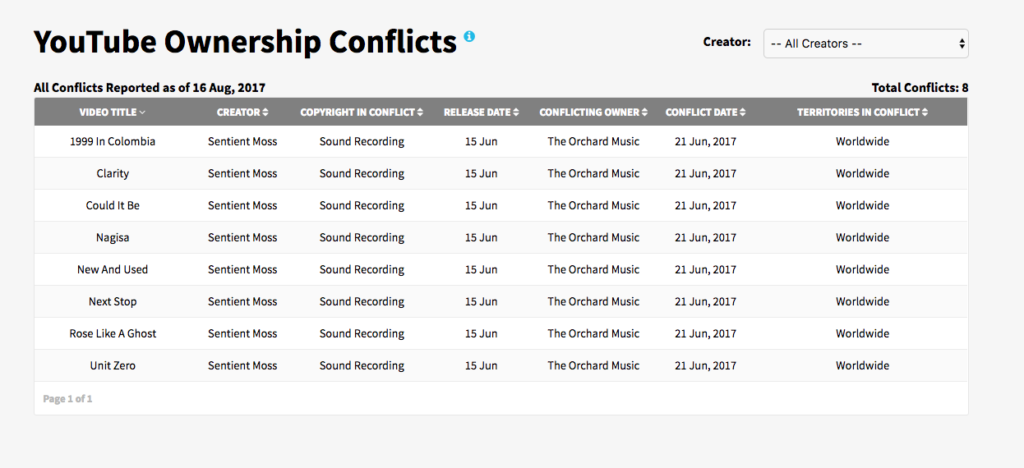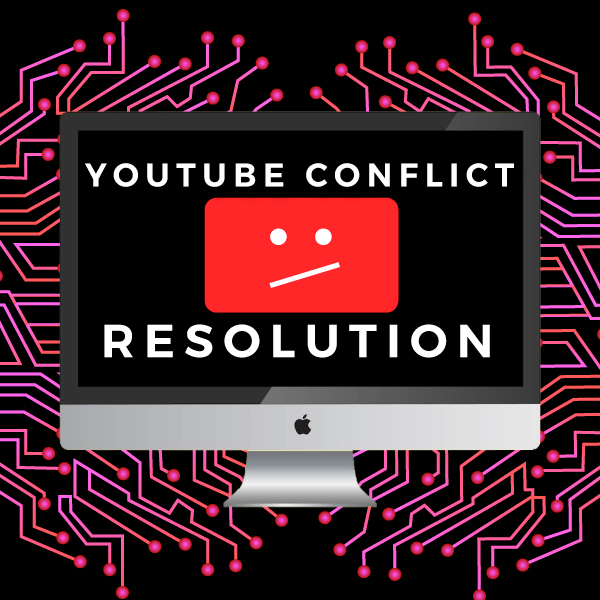Nobody likes conflict, especially when it will prevent you from making money on YouTube. A YouTube ownership conflict occurs when multiple creators assert ownership of a single copyright within the same territory. While there are powerful tools like Vydia Content Protection to help you manage your copyrights at scale, they are only effective if they are properly used. Gaining a full understanding of what YouTube ownership conflicts are and how you can resolve them will help you monetize your videos to their fullest potential.
What is a Copyright?
Before you can start generating revenue on YouTube, you will need to determine what type of copyright you own and which territories you own it in. A copyright contains information about a piece of your intellectual property, such as a music video or webisode, that you have provided to YouTube for rights management purposes. There are a variety of different copyright types for YouTube so it is vital that you select the correct one for your content. The different copyrights types include:
- Composition– you own the rights to the lyrics and melody.
- Master Recording– you hold the rights for the sound recording of the composition.
- Music Video– you hold the rights for the visuals and master recording.
- Web– you own the rights to any video content not covered by the other copyright types.
Digital rights administrations like Vydia, do not own your copyrights, you maintain 100% ownership. We only collect digital revenue on the content you give us the rights you. In order to avoid YouTube ownership conflicts, Vydia Content Protection proactively prompts creators to select their specific copyrights and specify who actually owns them.
What is a YouTube Ownership Conflict?
YouTube ownership conflicts occur when another YouTube partner attempts to claim ownership of an exclusive copyright Vydia is already administering for you. An exclusive copyright means that you are the only party that has control over a specific copyright and can distribute and monetize within the determined territories where you own the content. Typically, once a YouTube ownership conflict occurs, monetization for the copyright in conflict will be suspended in the overlapping territories. However, if the conflicting parties have specified different protection policies (monetize, block, or permit) on the same copyright, the most restrictive policy is applied. It is very important to resolve any conflicts as soon as possible to ensure you are not missing out on any revenue!
How Can I Resolve A Conflict?
The Vydia Dashboard is setup to enable users to easily track and see if their videos are in conflict, who they are in conflict with, and how to reach out to the party in question. To see if you have a conflict, log into your Vydia account, and on the main dashboard, you will see an “Ownership Conflicts” button populated with how many conflicts have arisen.

Once you select the button you will be taken to your “YouTube Ownership Conflicts” page where you can see which video and specific copyright are in conflict. You will also be able to see the other party you are in conflict with and which territories the conflict is occurring.

To resolve a conflict, reach out to the conflicting owner directly and request that they remove their ownership from YouTube. You can also submit a support ticket to our in-house Digital Rights team at support.vydia.com, and be sure to include the link to the video being claimed.
Protecting your intellectual property is our priority here at Vydia, and we want to make sure you fully understand how the Vydia Content Protection tool works to manage your rights at scale while defending them across every digital platform. If you have any questions about YouTube ownership conflicts or the protection process in general, our team of experts is happy to help. You can also tweet us your question with #AskVydia or comment on our Vydia University videos on YouTube.
